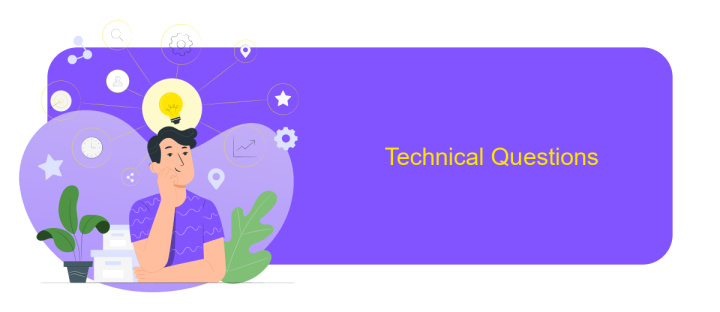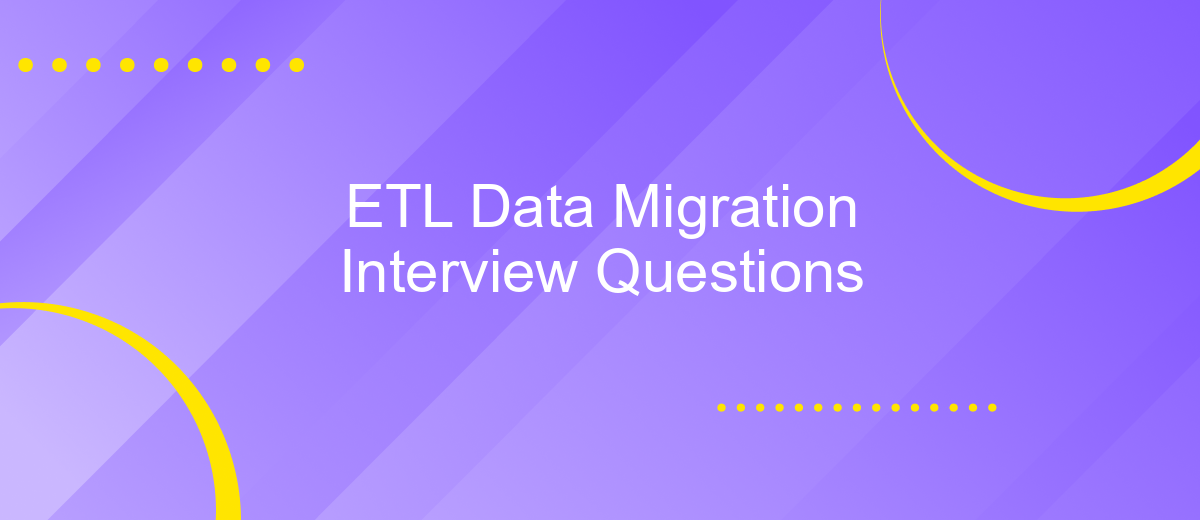ETL Data Migration Interview Questions
When preparing for an ETL data migration interview, it's crucial to understand the key concepts and common questions that may arise. This article will guide you through essential ETL data migration interview questions, helping you to showcase your expertise and confidently tackle the interview process. Whether you're a novice or an experienced professional, these questions will assist in your preparation.
ETL Data Migration Interview Questions
ETL data migration is a critical process in data management, involving the extraction, transformation, and loading of data from one system to another. During an interview, candidates may be asked a variety of questions to assess their understanding and experience with ETL processes.
- What are the key steps involved in ETL data migration?
- How do you handle data quality issues during migration?
- Can you explain the difference between ETL and ELT?
- What tools and technologies have you used for ETL processes?
- How do you ensure data integrity during migration?
- Describe a challenging ETL project you have worked on.
- How do you optimize ETL workflows for performance?
Understanding the nuances of ETL processes is crucial for successful data migration. Tools like ApiX-Drive can simplify integration setups, ensuring seamless data transfer between systems. Candidates should be familiar with such tools and their functionalities to effectively manage ETL projects.
Introduction

In today's data-driven world, ETL (Extract, Transform, Load) processes are critical for organizations to efficiently manage and migrate their data. ETL data migration involves extracting data from various sources, transforming it into a format suitable for analysis or storage, and loading it into a target system. This process ensures that data is accurate, consistent, and accessible across different platforms, enabling businesses to make informed decisions and streamline operations.
Preparing for an ETL data migration interview can be challenging, as it requires a deep understanding of data integration, transformation techniques, and best practices. One of the tools that can significantly simplify this process is ApiX-Drive. ApiX-Drive is a versatile integration platform that allows users to automate data flows between various applications and services without the need for coding. By leveraging such tools, candidates can demonstrate their ability to efficiently manage complex data migrations, making them valuable assets to any organization.
ETL Process and Data Migration

The ETL (Extract, Transform, Load) process is a crucial component of data migration, ensuring that data is accurately transferred from source systems to target systems. This process involves three main stages: extracting data from various sources, transforming it into a required format, and loading it into a destination system. Proper execution of ETL can significantly enhance data quality and consistency.
- Extract: This stage involves retrieving data from different sources, such as databases, cloud storage, or external APIs. Tools like ApiX-Drive can facilitate seamless integration and data extraction from various platforms.
- Transform: During this phase, the extracted data is cleaned, normalized, and formatted to meet the target system's requirements. This may involve data validation, deduplication, and conversion processes.
- Load: The final stage is loading the transformed data into the target system, ensuring it is stored correctly and is readily accessible for analysis and reporting.
Effective data migration through the ETL process is essential for maintaining data integrity and ensuring that business operations continue smoothly. Tools like ApiX-Drive can automate and streamline these processes, reducing the risk of errors and saving valuable time and resources.
Technical Questions

When preparing for an ETL data migration interview, it's crucial to understand the technical aspects that might be discussed. Interviewers often focus on your practical knowledge and problem-solving abilities in real-world scenarios.
One key area to be familiar with is data integration tools. For instance, ApiX-Drive is a popular service that simplifies the integration process by allowing seamless connections between various applications and data sources without the need for coding. Understanding how such tools work can give you an edge during the interview.
- Explain the ETL process and its stages: Extraction, Transformation, and Loading.
- Discuss common challenges in ETL data migration and how to mitigate them.
- Describe how you would handle data quality issues during migration.
- Explain the role of data validation and testing in ETL processes.
- Share your experience with specific ETL tools and platforms, such as ApiX-Drive, Talend, or Apache Nifi.
Being well-prepared with these technical questions will not only showcase your expertise but also your ability to apply practical solutions in ETL data migration projects. Make sure to highlight any hands-on experience and familiarity with integration tools to make a strong impression.
Behavioral Questions
When working on ETL data migration projects, describe a time when you faced a significant challenge and how you overcame it. For instance, you might discuss a situation where data integrity was compromised during the migration process and the steps you took to identify and rectify the issue. Highlight your problem-solving skills, attention to detail, and ability to work under pressure to ensure data accuracy and consistency.
Tell us about a project where you had to collaborate with multiple teams to achieve a successful data migration. Explain how you managed communication and coordination among different stakeholders, including developers, analysts, and business users. If applicable, mention any tools or services, such as ApiX-Drive, that you used to streamline integrations and automate workflows. Emphasize your teamwork, leadership, and project management skills that contributed to the project's success.
FAQ
What is ETL in the context of data migration?
What are the main challenges faced during ETL data migration?
How do you ensure data quality during the ETL process?
What tools can be used for automating ETL data migration?
How do you handle data transformation in ETL?
Routine tasks take a lot of time from employees? Do they burn out, do not have enough working day for the main duties and important things? Do you understand that the only way out of this situation in modern realities is automation? Try Apix-Drive for free and make sure that the online connector in 5 minutes of setting up integration will remove a significant part of the routine from your life and free up time for you and your employees.

